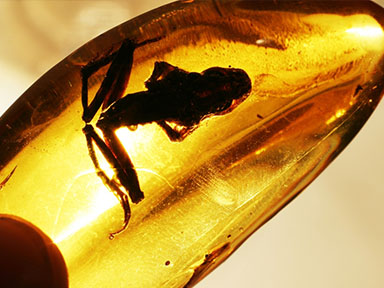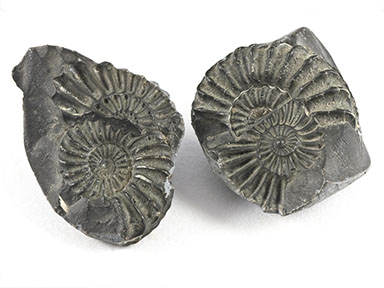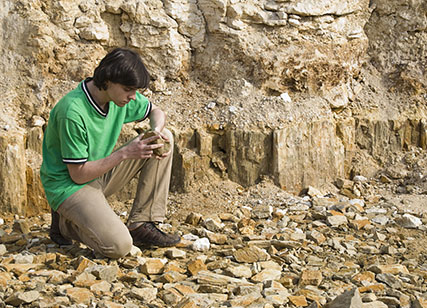Reviewing big ideas... about fossils
Fossils are the preserved evidence of organisms (living things like plants or animals) that were once alive a long time ago. This evidence might be the preserved remains of the plant or animal or the traces the animal or plant leaves behind like footprints or burrows. Fossils are usually found in sedimentary rock that is formed by deposition of layers of mud and sand from rivers, streams, lakes and oceans over a long, long time. Not all dead plants and animals turn into fossils, but most fossils are found in or near deposits of sedimentary rock.
There are 4 common types of fossils. Hover on the images to know more.
-

Sometimes the actual organism or parts of the organism are preserved. This kind of fossil is called a true form fossil. Insects preserved in tree sap are true form fossils. So are woolly mammoths found trapped and frozen in glacial ice. These true form fossils are very rare.
-

A fossil can also consist of some mark or evidence of an organism such as a footprint, a nest or even its waste (poop). This type of fossil is called a trace fossil.
-

In some cases the remains of an organism trapped in the rock formation just leave an impression of the organism. This type of fossil is called a mold.
-

If the mold then later fills with other materials, the fossil formed is called a cast.

